FORT BRAGG, N.C. (Army News Service, Oct. 18, 2010) -- "You want to fight a German'" asked a jumpmaster to 82nd Airborne Division Paratroopers trying to earn German parachute wings here, Oct. 5-7.
Sgt. 1st Class Raymond Lewandowski, of the 82nd's 1st Brigade Combat Team, was explaining the differences between how German jumpmasters and American jumpmasters operate. One difference being that a German jumpmaster will physically block an overly-eager jumper from exiting the aircraft if the safe jumping light goes off.
"In my opinion, hands-on learning of how each other operates is very necessary for two forces to work together," said Lt. Col. Christoph BAfAPcker, a German Army liaison officer assigned to the XVIII Airborne Corps, who made his 101st jump on day two of the event.
The chance for Fort Bragg Paratroopers to earn German jump wings by jumping from a German C-160 aircraft under the direction of German jumpmasters returned again this fall with part two of Operation Federal Eagle, a program founded by the German liaison staff several years ago. Part one is a free fall event that takes place in the spring with German Special Forces jumpmasters.
Because American jumpmasters trained the first German Paratroopers of the new German army following World War II, many of the airborne procedures are similar. There are still some differences, however, said BAfAPcker.
"Therefore it's necessary to train together so that, in real operations, everybody knows what is going on," he said. "Otherwise it could cause confusion, or the worst case, it could cause injuries or even death."
A case in point was offered by Sgt. 1st Class William Johnson, 1st Brigade's noncommissioned officer in charge of airborne operations, who has participated in airborne training with Hondurans, Canadians and Kazaks.
"Many years ago, we were jumping with a group of Honduran Special Forces guys out of one of their old C-47s that looked like it was duct-taped together. Unknown to us, one of the plane's two engines had a habit of belching black smoke and flames, but the bigger problem was that they had a horn that sounded three times prior to a jump. On an American plane, three horn blasts is the signal to abandon ship. Imagine what we Americans did when we saw the engine on fire and heard the horn blowing three times," he said.
Besides the training, camaraderie is the other benefit of Operation Federal Eagle, said BAfAPcker.
"Airborne forces all over the world are very unique," he said with a laugh. "We are all jumping out of intact airplanes."
"The jump is primarily a team-building effort between two different nation's militaries to provide esprit de corps," said Maj. Nathan Palisca, officer in charge of airborne operations for the 82nd Airborne Division.
Palisca said the goal was to give the lower ranks, primarily E-6 and below, a chance to earn foreign jump wings.
The event was executed by 1st Brigade's 2nd Battalion, 504th Parachute Infantry Regiment "White Devils," which was responsible for organizing and manifesting Paratroopers.
Over 800 Paratroopers earned German jump wings during 15 lifts of static-line drops onto Sicily Drop Zone from 1,250 feet, according to White Devil airborne operations officer, 1st Lt. John Griffin of Seattle, who described organizing the times and manifests across the division as a healthy challenge.
On the German side, the liaison staff had to coordinate between the complex training and airborne schedules at Fort Bragg, the German jumpmasters who are also training and deploying to Afghanistan, and the German aircraft.
"The German C-160 cannot just fly over to jump here, so they have to bring cargo to our embassy," said Sgt. Maj. Alexander Goeb with the liaison staff. This year's aircraft and crew came from Air Transport Squadron 61 in southern Bavaria.
"It's somewhat difficult to bring all three parts together, but it works out every year," said Goeb, a former Special Forces officer of 10 years.
Many countries smaller than the U.S., Germany included, are accustomed to training and operating with other country's militaries, said BAfAPcker, citing his own training and military education with countries of the European Union and several non-North Atlantic Treaty Organization countries, including Chile, China and Russia.
"Every force, except the American force maybe, is not able to do a full combat operation alone. You have to stay with allies, therefore you have to work combined, joint," said BAfAPcker.
"Germans make great efforts to work both jointly and combined, and from what I've seen in different forces, is always pretty complicated," he said. "We try to be very disciplined. We have a good comradeship, especially in the airborne forces, but also in the other forces."
The Americans have strength and power, and are often better equipped, said BAfAPcker.
"They are also very tough and good," he said.
With Federal Eagle, U.S. Paratroopers get to jump out of a different airplane, he said. While the C-160 looks similar to the American's C-130, it is smaller in the back so that exiting jumpers must jump more vigorously out of it. Also, because the plane's wheels are housed in sponsons outside the aircraft body, it can fit up to 70 jumpers -- about six more than the familiar C-130.
For the six visiting German jumpmasters and one officer of the 31st German Airborne Brigade based in Oldenburg, Germany, the event was an opportunity to visit America and work with what many consider the greatest army in the world.
"It's really exciting," said Volker Metzig, a jumpmaster and sniper team leader who has served in the German army since 2003 and as a Paratrooper since 2006. "It's the second time in the United States for me. I vacationed here once. The USA is a great country, and the U.S. Army is fascinating to me."
His brigade is one of two airborne brigades in Germany's most decorated division, the Special Operations Division, whose staff is based in Regensburg.
The other, 26th Airborne Brigade, traditionally visits Fort Bragg just before Christmas to participate in Operation Toy Drop, for which Paratroopers donate toys at Christmas time for the opportunity to jump with jumpmasters from a variety of countries.
This year's Toy Drop will feature jumpmasters from at least eight countries, including Botswana, Ireland, Australia, Great Britain and Germany, said Palisca.
(Sgt. Michael J. MacLeod writes for 1BCT, 82nd Airborne Division)

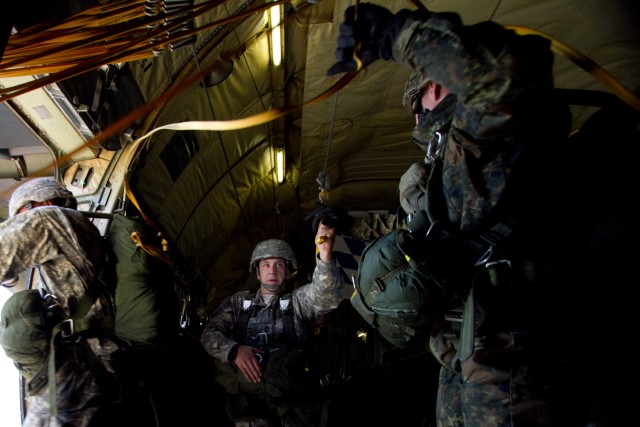

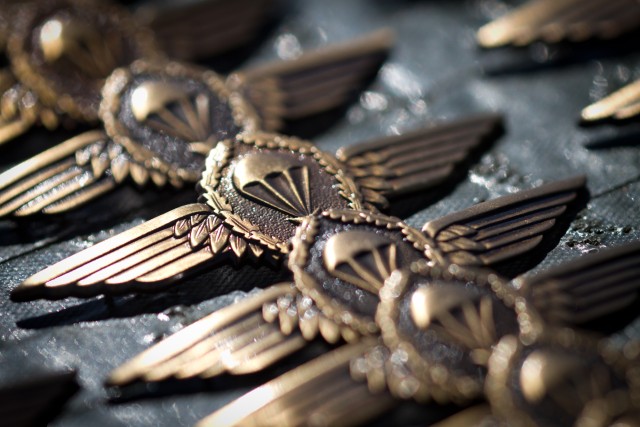
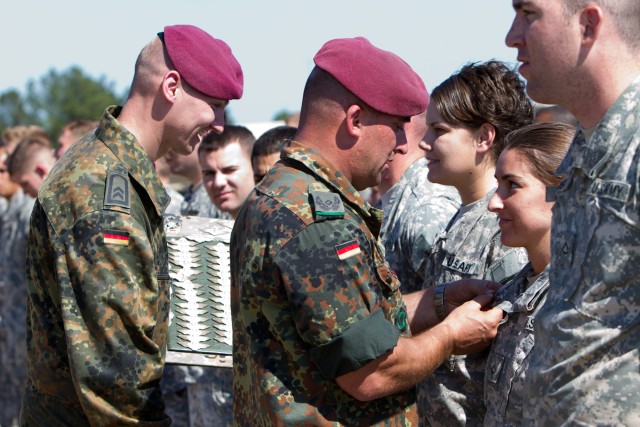
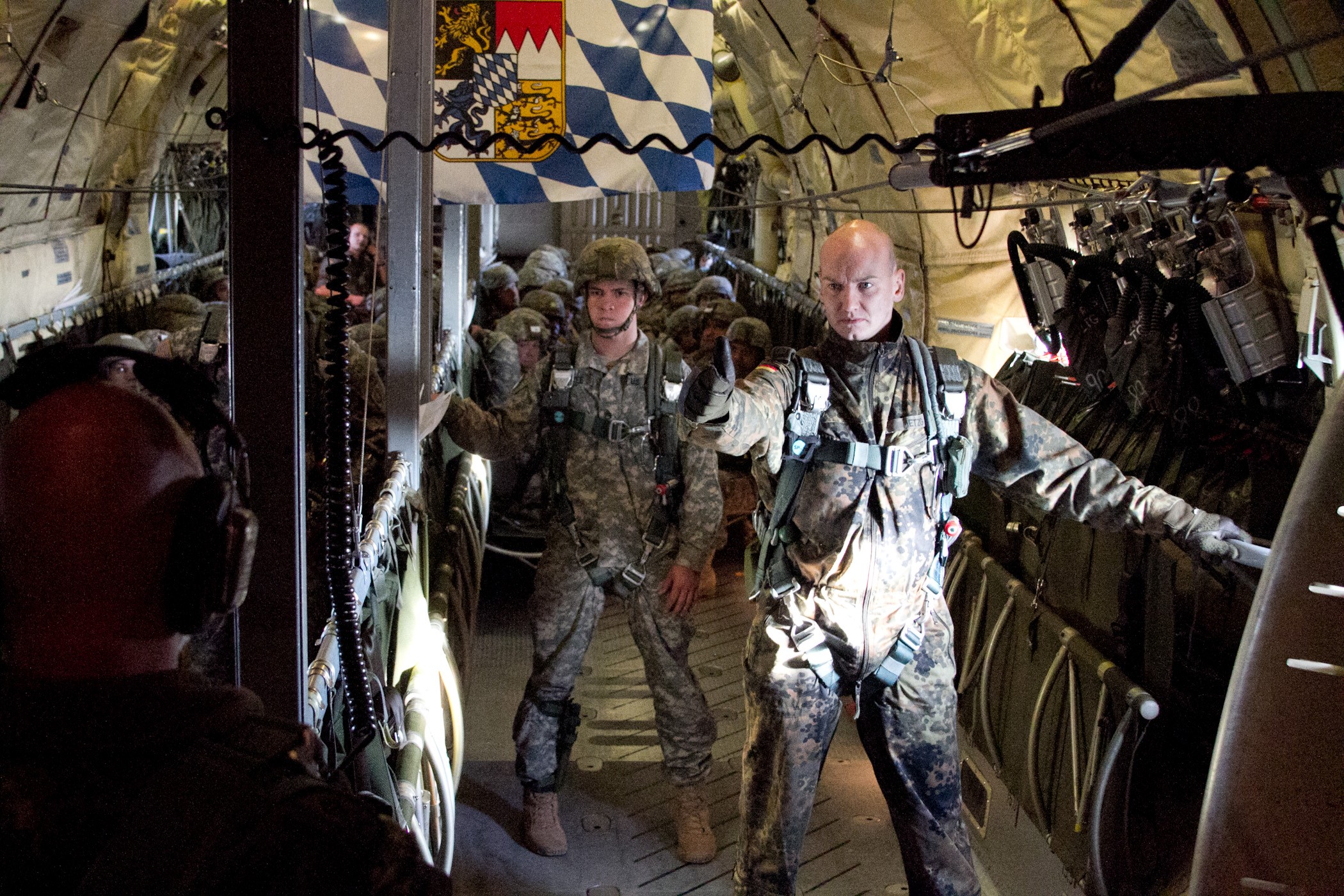



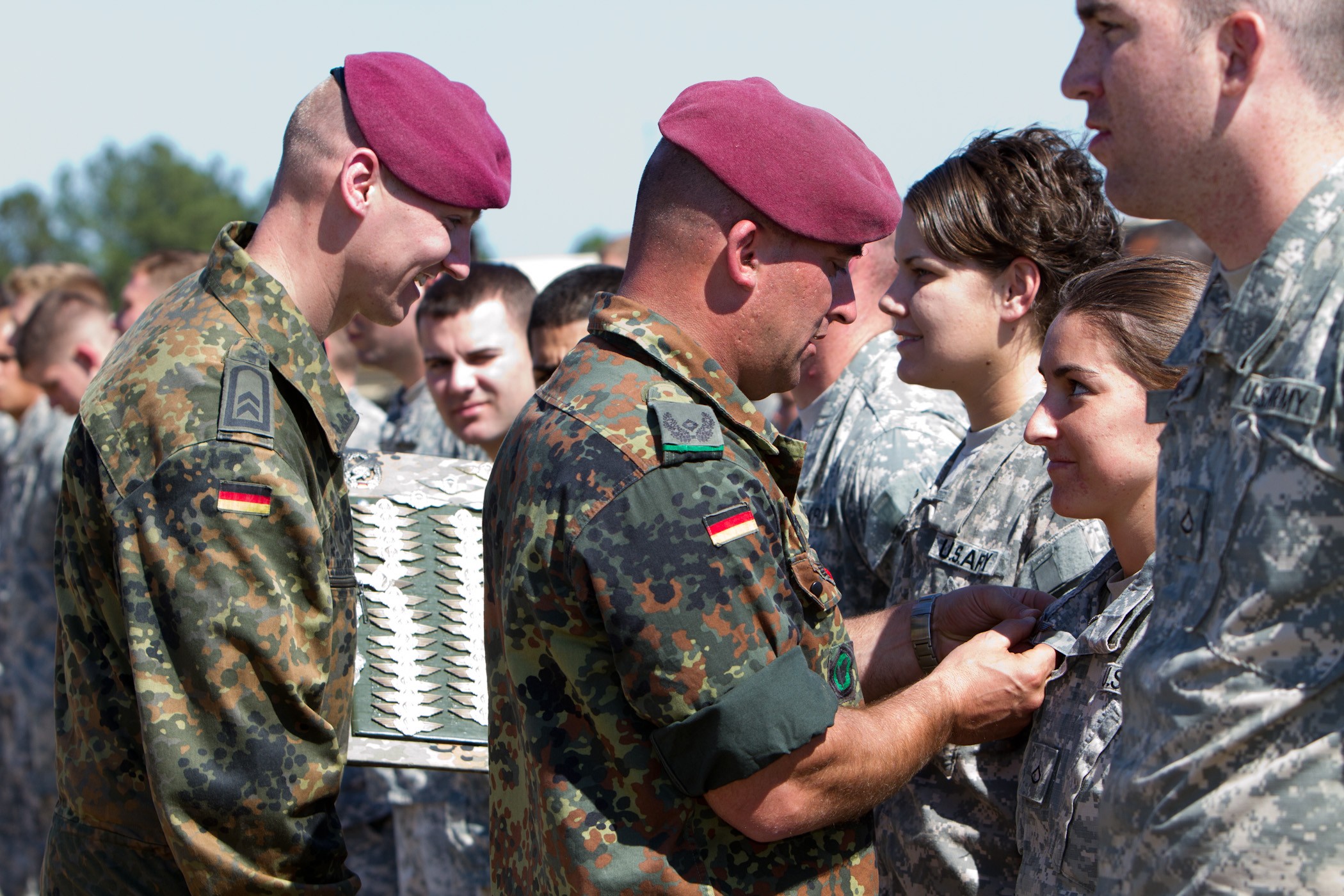
Social Sharing